Over-arching Arc of Tension and Dynamic Waves
Symphonic principles in Bruckner’s unaccompanied works
Bruckner’s symphonic works are sufficiently covered in the literature. On the other hand, his a cappella choral works eke out a shadowy existence and are usually treated only as by-products. Very wrongly, as choral conductor Jan Schumacher finds, who – also in view of the Bruckner anniversary year 2024 – has dealt with this aspect of the Austrian composer’s oeuvre for his contribution.
In the extensive literature published on Bruckner, the composer’s unaccompanied choral works are treated in most cases as by-products of little relevance amongst his compositional output. There is a widely-held belief that Bruckner’s choral works were written before he turned to the symphonic form. In fact, a large number of smaller choral compositions were written in Windhaag and Linz, however, it is conveniently overlooked that Bruckner’s most important unaccompanied works were in fact not written before the symphonies, but rather in parallel with them (except for the Ave Maria of 1861):
Jan Schumacher ist für den Carus-Verlag als Herausgeber und Referent tätig.
In 1863 Bruckner ended his two-year period of study with Otto Kitzler and then worked for several years on his 1st Symphony, the original version of which was completed in 1866. Following this he composed the 2nd, 3rd, 4th, and 5th Symphonies between 1869 and 1876. In 1869 Locus iste was also written. After a further three-year gap, between 1879 and 1887 Bruckner composed the 6th, 7th, and 8th Symphonies; during these years, “at the peak of his artistic maturity” (Alberto Fassone), he also wrote Os justi (1879), Christus factus est (1884), and Virga Jesse (1885). In parallel with his work on the unfinished 9th Symphony Bruckner finally set Venantius Fortunatus’ Crucifixion hymn Vexilla Regis in 1892.
Bruckner’s compositional methods are obviously similar in symphony and motet, although of an entirely different scale and dimension (and interestingly enough, these methods are much more vividly comprehensible in the choral works than the symphonic works because of their compactness!). In his 1961 book Die Form der reifen Messen Anton Bruckners, Horst-Günther Scholz undertook groundbreaking research on Bruckner’s compositional technique, taking examples from the orchestral masses, but he specifically added that the conclusions he drew also applied to the form of the symphonies. We still await a standard work of this quality for Bruckner’s unaccompanied compositions.
Scholz describes the basic development types and compositional features of Bruckner’s compositions, which are listed below (partly in much simplified form):
- Bruckner’s works are based first and foremost on motivic groups which relate to, or contrast with each other and are strung together to form larger composites of thematic movements.
- the underlying motivic material (previously analysed by Robert Haas, 1934) and its “function in the overall melodic context”, or even its “sound symbolism” (in Haas, for example, the “octave fall” as “symbol of divine greatness”)
- the use of key themes for whole compositions
- metric schemes, metric ratios and proportions, as well as tempo in general
- harmonic frameworks and the purposeful structure of harmonic movement, as well as their influence on the dramaturgy of the composition
- tonal structures, e.g. through “changes in the allocation and style of setting for the voices” (very evident in the motets, e.g. in the Ave Maria)
- dynamic (here in the sense of “volume”, Scholz uses the term “external dynamics” (Außendynamik)) developments, particularly also in relation to harmony and tonal structures
- over-arching melodic movements resulting from the totality of the parameters mentioned previously, in the sense of great “dynamic waves” and their different progressive possibilities, also their opening and ending variants, e.g. such as the typically “abrupt” Brucknerian endings.
In summary, it can be said that in Bruckner’s more mature works (that is, from 1863 onwards), there is a primacy of motifs over a fixed complex of themes which serves the development of free melodic arcs that are not bound to any rigid metrical scheme and are always in a “relationship of tension to each other that transcends the immediate relationship” (Scholz). These motivic units are the carriers of developments which can be reconstructed if we recognise the destinations of the parameters of melody, harmony, sound formation, external dynamics and the transformation of expressive character running in “waves”, especially as these almost always complement each other; or it is equally meaningful if they do not do this!
Here, I would like to add a remark made by the leading Bruckner scholar Leopold Nowak, that with Bruckner, we only fully grasp the form “if we pay sufficient attention to the ‘dynamic’, to the ‘progression’.” The features mentioned ultimately form the basis of most compositions of the late 19th century, but they feature in few composers’ works in such a polished way as is the case with Bruckner. In general, in analysising his compositional technique, it must always be borne in mind that Bruckner – like every other outstanding composer – employs these means to convey music in itself and also its message, especially when we are thinking about music which sets text.
What does this now mean for musical practice?
It goes without saying that a thorough study of the score must be the basis of any interpretation. The effort to comprehend the deep structure of Bruckner’s overall compositional concept and its importance for an interpretation of the compositions must always command the conductor’s attention. A simple stringing together of individual sections is unfair, especially for Bruckner’s music – it is imperative that there is a fundamental overall interpretative concept.
All audio samples are taken from CD Carus 83.466 “Anton Bruckner. Ave Maria” with the NDR Chor Hamburg conducted by Hans-Christoph Rademann. The album is available via Spotify.
Two examples attempt to illustrate this (to some extent!):
Bruckner wrote the hymn Vexilla regis in 1892 of his own volition and “purely following his heart’s desire”, inspired by his special regard for the almost mysterious rites of Holy Week (see also the expression mark of the gradual Christus factus est: “Moderato, misterioso”!). This atmosphere is expressed in the structure of the opening. The sound gradually expands out of the unison which, incidentally, has a direct compositional parallel in the orchestral works – we think of the tremoli at the opening of the symphonic movements.
In Vexilla regis the composition develops out of one note, but we also find similar opening structures in Christus factus est, Virga Jesse, Ave Maria, and Os justi. Even though a complete harmony is heard right at the beginning, this initially remains static before opening up – mainly in small steps by individual voices.
According to the formal principles outlined above it is hardly surprising that the end of the motets is a mirror image of the openings, in the sense of the over-arching arc of tension. All the motets from Bruckner’s mature period end quietly and with tension – particularly impressively in the case of Os justi, where a five-measure soprano cantilena rises above the harmonic pedal point in the lower voices in the home key, with the work finally ending with the same musical material in a unison “Alleluja” for the whole chorus. The conductor must always be conscious of this essential connection between the beginning and the end of the work.
Particularly impressive examples of the “dynamic waves” are the polished climatic structures in Virga Jesse and Christus factus est (even though they cannot be analysed in detail here). For the conductor, the study of the precise function of each section is crucial, and this will naturally have a direct influence on the interpretation: how should the end of the different sections be shaped, for example? Should the last note be phrased off, in line with the text? Should the specified dynamic stage be left in place? Or should the end of the phrase even be strengthened, in order to give more weight to the subsequent rest (and the entry following that)?
The two examples only show partial aspects of the overall structure, but they emphasize the necessity to grasp the “whole entity” of the particular Bruckner composition with precision. Horst-Günther Scholz perfectly summed up what is special about Bruckner’s music when he wrote: the “forward-carrying tension in the directedness of the melodic movement, the unfolding of intensifications of waves lend his music the stamp of uniqueness, they characterise his very own […] artistic intentions […].”
Jan Schumacher, Frankfurt, June 2021


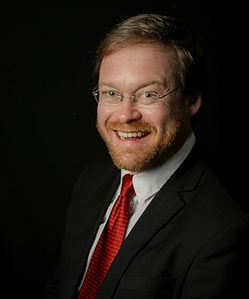
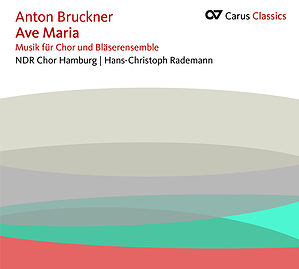
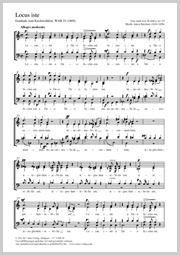
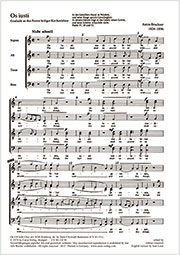
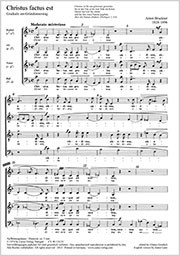
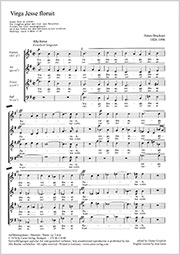
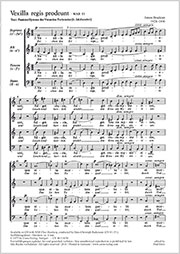
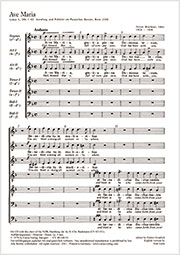
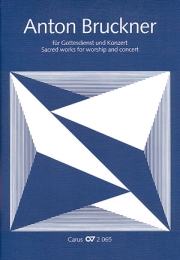


Leave a Reply
Want to join the discussion?Feel free to contribute!